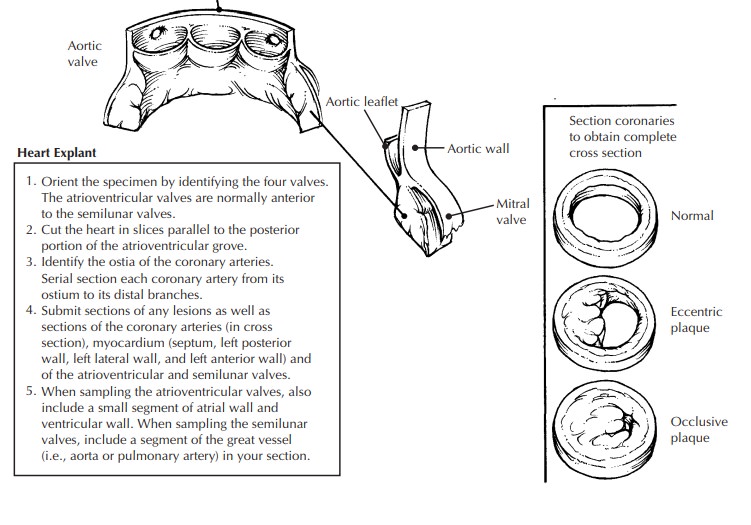Chapter: Surgical Pathology Dissection : The Cardiovascular, Respiratory System
Cardiac Tumors: Surgical Pathology Dissection
Cardiac Tumors
Resections
of cardiac tumors are not common surgical pathology specimens. Despite their
in-frequency, these specimens are easily tackled using the standard approach to
tumor dissection.Describe the number and sizes of the tissue pieces received
and the presence of epicardium, endocardium, or muscle. Document the size of
any masses. The color and texture of the mass are also important to note, as
they may indicate the predominant presence of fibrous tissue, myxoid stroma,
adipose tissue, or muscle. Intra-cavitary masses can be pedunculated or sessile
and should be described accordingly. The resec-tion margin(s) should be inked
and sampled, and the status of these margins should be docu-mented in your
final report, as it is useful infor-mation for the surgeon. As with any tumor,
adequate sampling requires representative sec-tions of areas that may show
distinct gross fea-tures, such as fibrosis, necrosis, hemorrhage, or a
recognizable normal structure (e.g., valve, tra-beculae). If the mass is large,
one cassette for every centimeter of maximal diameter of the tumor should be
adequate. A piece of the tumor may be frozen and stored for special studies,
and submission of fresh tissue may be indicated if cytogenetic or flow
cytometric analysis is to be performed. Sampling the tumor for these analy-ses
should avoid areas of frank necrosis. If the tumor is heavily calcified, it
should be handled similar to a bone specimen for the slicing, sam-pling, and
decalcifying procedures.



Related Topics